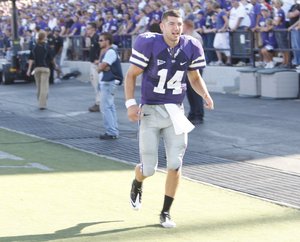I went to graduate school because the girl I was living with was a veterinary student who had another three years of schooling ahead, so I  thought I needed a reason to hang around.
thought I needed a reason to hang around.
That’s not a good reason to go to graduate school.
I married the girl and had kids but dropped out of grad school.
Distance education may have helped.
The World Health Organization estimates that up to 30 per cent of people in developed countries get sick from the food and water they consume each year and has identified five factors of food handling that contribute to these illnesses: improper cooking procedures; temperature abuse during storage; lack of hygiene and sanitation by food handlers; cross-contamination between raw and fresh ready to eat foods; and acquiring food from unsafe sources.
Food Safety Risk Analysis examines the interwoven roles of risk assessment, management and communication – defined as risk analysis – and applies these concepts to problems and policy development in food safety. This course will aid students in developing the ability to critically examine food safety risk issues from various stakeholder perspectives, leading to risk management and communication activities to reduce the impact of foodborne disease.
A significant portion of the course will focus on the importance of thorough research and good communication skills, as well as the suitability of communication efforts. The emphasis on acquiring and critically evaluating electronic information will assist students in further developing lifelong learning skills. The course will be presented through lectures, case study presentations, and Internet-based support material including text, audio and video through the extensive database maintained by Dr. Douglas Powell of Kansas State University and colleagues in food safety. This course will be of interest to anyone in the food industry, food safety regulators, public health inspectors, food service managers and others.
A complete course syllabus is available here. Or e-mail me, dpowell@ksu.edu.
For enrolment information, visit the Kansas State Division of Continuing Education website at http://www.dce.k-state.edu/ and click on Courses at the top of the page to search for it. Interested individuals can click the Add Class to Interest List button. This will prompt the student to either log into iSIS if they are currently a student and enroll, or provide information about applying to the university if they are not a student.
I have nothing to do with the prices. But at least it’s not a humanities degree (that’s a joke; see video below).

.jpg) opinions on current food safety issues. Opinions must be reliable – with references — rapid and relevant.
opinions on current food safety issues. Opinions must be reliable – with references — rapid and relevant. condensed into short items or stories that make up the daily postings. The listserv has been issued continuously since 1994 and is distributed daily via e-mail to thousands of individuals worldwide from academia, industry, government, the farm community, journalists and the public at large.
condensed into short items or stories that make up the daily postings. The listserv has been issued continuously since 1994 and is distributed daily via e-mail to thousands of individuals worldwide from academia, industry, government, the farm community, journalists and the public at large. bites.ksu.edu
bites.ksu.edu on a Saturday afternoon while dining on grilled grouper fresh from the Gulf of Mexico, asparagus, summer squash and sweet potatoes.
on a Saturday afternoon while dining on grilled grouper fresh from the Gulf of Mexico, asparagus, summer squash and sweet potatoes. 31-22. And we just finished a delightful lunch of grilled Gulf shrimp accompanied by grilled peaches, pineapple and strawberries.
31-22. And we just finished a delightful lunch of grilled Gulf shrimp accompanied by grilled peaches, pineapple and strawberries..jpg) All games should be like that. They’re not.
All games should be like that. They’re not.